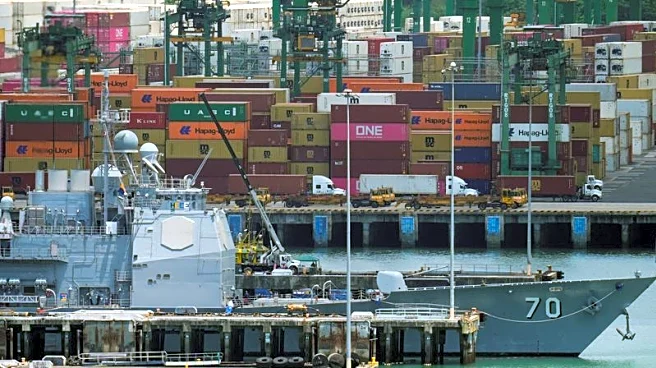What's Happening?
The Instituto Costarricense de Electricidad (ICE), a government-run provider of electricity and telecommunications services in Costa Rica, has announced a significant enhancement to its international capacity through the integration of the Trans Americas Fiber Systems submarine cable, known as TAM-1. This cable is set to commence commercial operations in the fourth quarter of 2025 and will extend 7,000 kilometers along the Atlantic coast, connecting the United States to South America. The cable will have landing points in several locations, including Colombia, the northern Caribbean, Mexico, and Central America. In Costa Rica, it will enhance connectivity with the Network Access Point (NAP) of the Americas in Miami, one of the largest data centers globally. The TAM-1 cable will feature 24 pairs of optical fiber, allowing ICE to scale up to 18 terabits per second, supporting services such as streaming, artificial intelligence, virtual reality, and 5G. This development is expected to reduce latency for real-time applications and encourage foreign investment and the growth of local data centers.
Why It's Important?
The integration of the TAM-1 cable is a strategic move for Costa Rica, as it significantly boosts the country's telecommunications infrastructure. By enhancing data capacity and reducing latency, ICE can offer improved services at more competitive prices, which is crucial for attracting foreign investment and fostering the growth of technology companies and cloud service platforms in the region. This development positions Costa Rica as a more attractive destination for tech companies looking to expand in Latin America. Additionally, the improved connectivity can support the country's digital economy, enabling advancements in sectors reliant on high-speed internet, such as finance, education, and healthcare. The move also aligns with global trends towards increased digitalization and the demand for robust telecommunications infrastructure.
What's Next?
As the TAM-1 cable becomes operational, ICE is expected to leverage this enhanced capacity to expand its service offerings and improve operational efficiency. The company may explore partnerships with international tech firms to further develop local data centers and cloud services. Additionally, the improved infrastructure could lead to increased competition in the telecommunications sector, prompting other providers to upgrade their services. Stakeholders, including government agencies and private enterprises, will likely monitor the impact of this development on Costa Rica's economy and its position in the global digital landscape.














